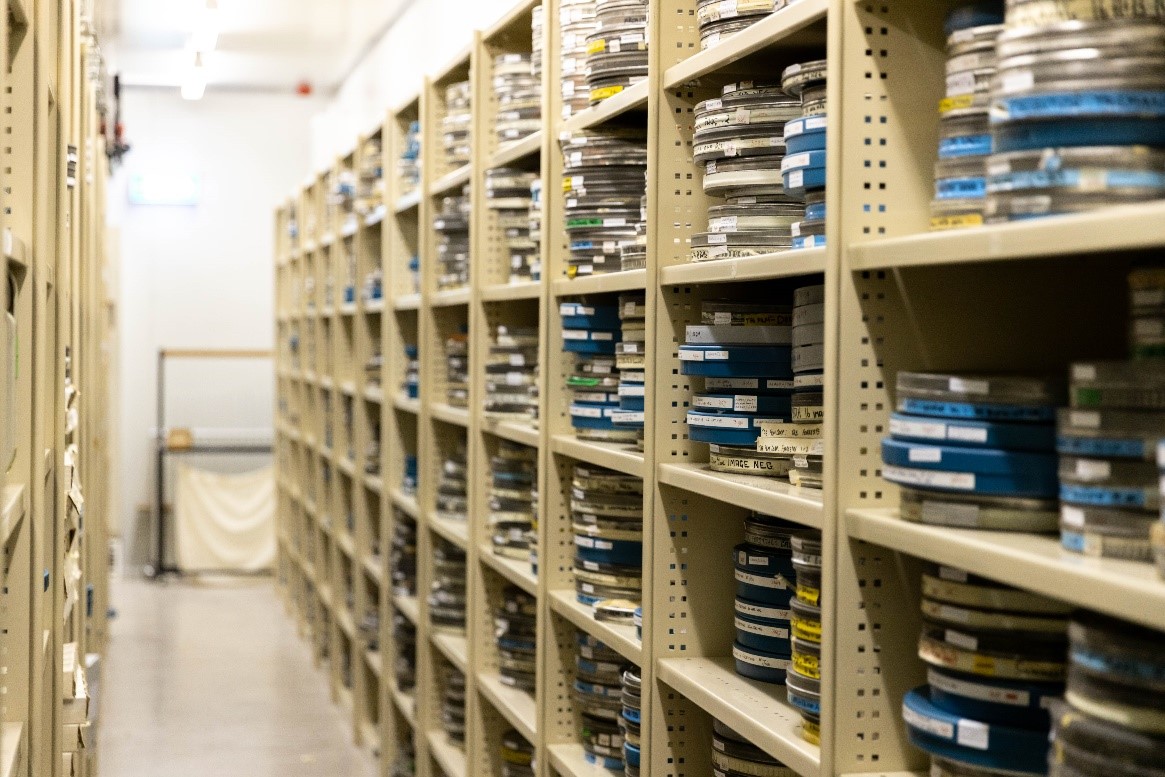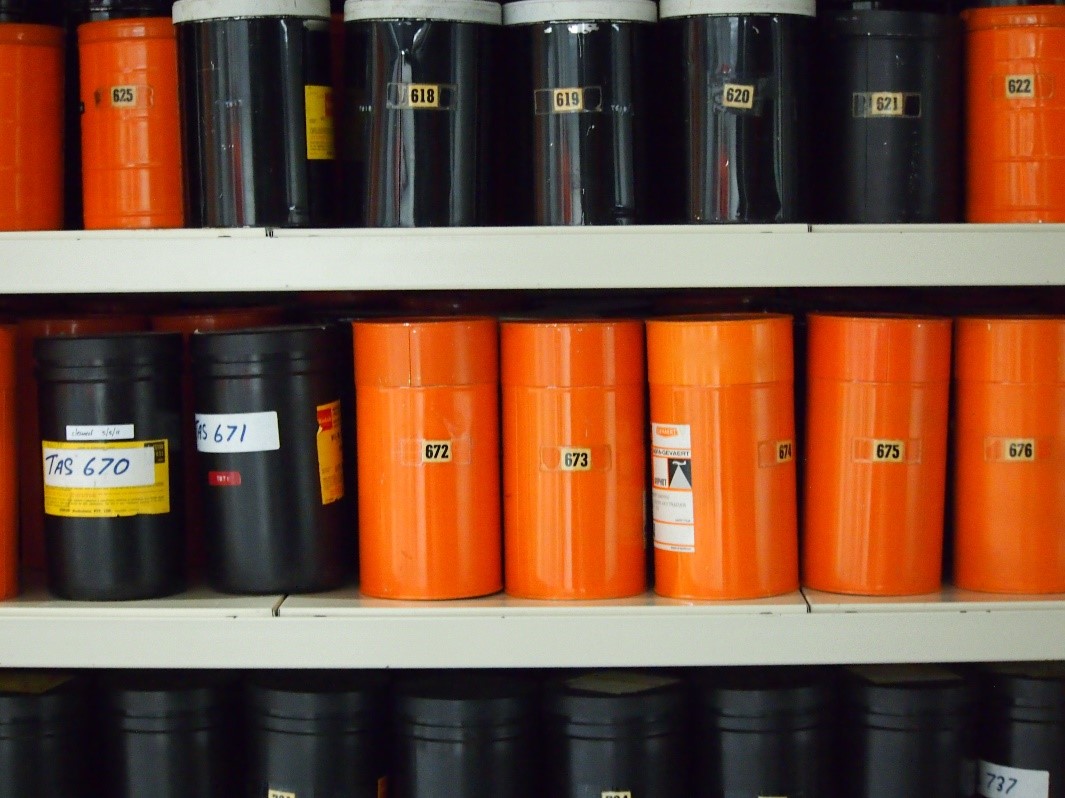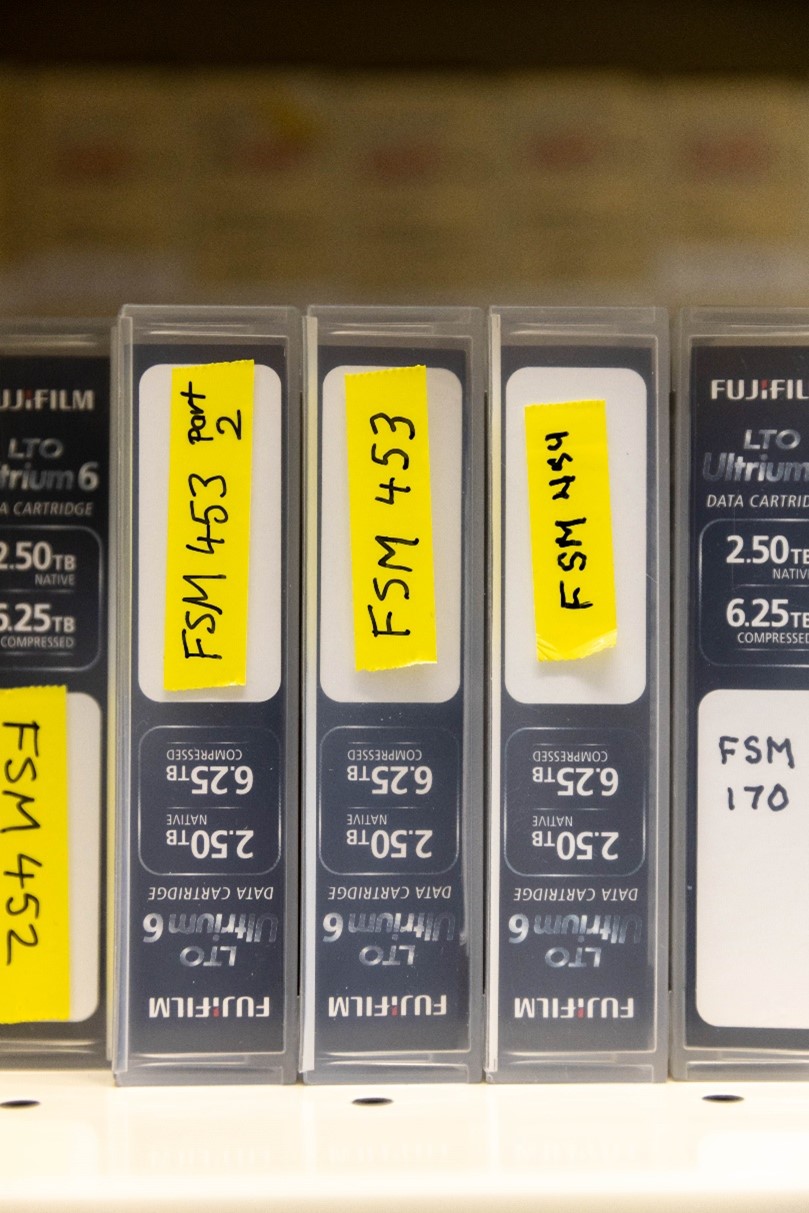Karin Haveman is Acting Manager Government Archives and Preservation at the Tasmanian Archives and Digitisation Services Coordinator
In February 2021, Libraries Tasmania launched the Preservation Digitisation Project – a major collaborative project that brings together Digitisation Services, System Support and Delivery, Government Archives, and the Community Archives teams. The aim of this project is to digitise our Tasmanian film, sound, and video collections for long-term preservation and to provide greater access to our collections for the public. Our priority is our magnetic tape collection which is at great risk of being lost forever if not digitised before 2025 (NFSA paper: Deadline 2025 | National Film and Sound Archive of Australia (nfsa.gov.au))

Tasmanian Archives film vault in the old repository (we are currently moving our collection storage to a new site).
Over 5000 audio visual items are being digitised by our Digitisation Services team in additional to outsourcing batches to external contractors. In June 2022 we accomplished a major milestone – the digitisation of all our non-viewing magnetic tape collection as part of the project scope.
The Preservation Digitisation Project has enabled us to provide improved access to our film, magnetic tape and sound collections as well as preserve the content in contemporary digital form. Digitised items are made accessible over time via our online catalogue on the Libraries Tasmania website (Tasmanian archives + heritage (libraries.tas.gov.au))
Once digitised and after each batch of files pass a technical QA, our team of Government and Community Archivists assess all content to check public access permissions and determine copyright before ingesting into Preservica, our Digital Asset Management system. We have now ingested approx. 45% of the digital items as part of project.

Government aerial films stored in their original canister in the film vault.
Preservica is part of the State Library and Tasmanian Archives infrastructure that is supporting the receipt of transfers from Tasmanian State Government Agencies and non-government organisations of digital records, including digitised and born digital. Online access to digital materials has become increasingly important for many Australian government, academic, cultural, and commercial organisations. Libraries Tasmania is part of a growing community of institutes using Preservica including The National Archives of Australia, The National Library of Australia, and the State Library of South Australia.
The Preservation Digitisation Project has also given us the opportunity to review our digital technical standards for the following three derivatives: preservation, production, and access. After extensively researching other GLAM institutes, we set about and developed our own set of digital technical standards for our audio-visual collection that we felt better suited our needs.
Online access to digital materials has become increasingly important for many Australian government, academic, cultural and commercial organisations. Libraries Tasmania is part of a growing community of institutes using Preservica including The National Archives of Australia, The National Library of Australia and the State Library of South Australia.

Detail magnetic data cartridges.
The access files are delivered to the public via the libraries catalogue with the full width of the film included on each side. Including the full width of the film often shows more content or information than otherwise would have been edited out in post-production. Some of the access files have required dye fade correction applied to provide a higher quality of content delivery for the public.
Our public collection of digitised content can be found through the library catalogue, like this Tasmanian Film Corporation show reel from 1985, which showcases some of the company’s work in advertisements, documentaries, drama, and instructional videos (Search - Tasmanian Archives (sirsidynix.net.au)).
